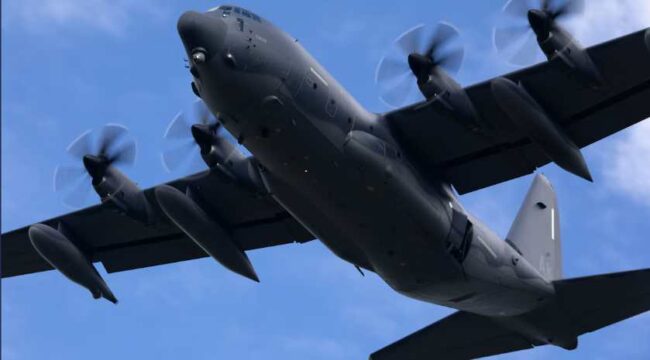
JOINT BASE ELMENDORF-RICHARDSON — Alaska Air National Guardsmen of 211th Rescue Squadron assisted District 17 Coast Guardsmen rescue a pilot of a downed Cessna 207 Nov. 21 at Iliamna Lake.
The Coast Guard dispatched an HH-60 Jayhawk from Coast Guard Air Station Kodiak, and the 176th Operations Group search and rescue duty officer dispatched a 211th Rescue Squadron HC-130J Combat King II, callsign “King,” from JBER after the Alaska Rescue Coordination Center received notification of the crash on Iliamna Lake’s northwest shore.
The HC-130 was already airborne on a training flight. Alaska Air National Guard Maj. George Geiges, 211th RQS HC-130 combat systems officer, said the diversion expedited their response to what could have been serious situation beyond the crashed plane.
“We were out on a local training line, and we received word of an aircraft down in the vicinity of Lake Iliamna,” Geiges said. “There was some confusion at first as to whether the aircraft had crashed in the lake or was on or near the shore. We knew the pilot had gotten out of the aircraft, and our initial concern is if he had crashed in the lake, he would be wet and hypothermic within minutes.
“We accepted the mission and climbed high-level and got out there as fast as we could,” Geiges continued. “It was about a 40-minute flight. As we got on station, we got a working frequency from the RCC because there was another air taxi in the area who was talking to the survivor. He was able to give us a situation overview, letting us know he had crash-landed on shore, and he seemed okay.”
Geiges commended the pilot’s preparedness despite operating an aircraft that would otherwise disappear into its surroundings.
“It was a white aircraft with a dark blue bottom crashed into snow and brush, so it blended in really well,” Geiges said. “Luckily, the pilot was smart. He had a bright-orange engine blanket, which he had placed in front of the aircraft. That is what we saw first.”
The HC-130 was able to contact the pilot via radio once overhead.
“He came up on frequency, we talked to him and did a quick medical assessment,” Geiges said. “He was good. He was up and walking, and he was uninjured. He had enough warm clothing and supplies for a couple of hours.”
Geiges let the pilot know the HC-130 was in coordination with the AKRCC who was also working to get the Coast Guard Jayhawk to the pilot’s location to pick him up.
Because the pilot wanted to conserve his battery, he worked out with the HC-130 to turn off his radio. King would fly overhead rock a wing to signal the helicopter was near so he could reactivate his radio.
As the HC-130 CSO, Geiges has access to a suite of sensors including an electro-optical/infrared camera mounted on the nose of the aircraft that helps the crew to find isolated personnel and to precisely pinpoint their coordinates using an integrated laser rangefinder.
“We set up a mile-and-half orbit around his vicinity, we got eyes on with the sensor, and we pulled a really detailed set of coordinates with the EO/IR,” Geiges said. “We passed that back to the RCC and coordinated a common deconfliction frequency with the Coast Guard helo.
“Once the Coast Guard helicopter got closer to the scene of the crash, we established communications with them, and gave a situation overview – what the pilot state was, what the aircraft state was – vectored them in to the survivors location. We did a low pass when the helicopter was about 10 minutes out to get the pilot back up on comms.”
The Jayhawk landed, and the crew did a quick check of the pilot before transporting him to the Iliamna clinic for further assessment.
